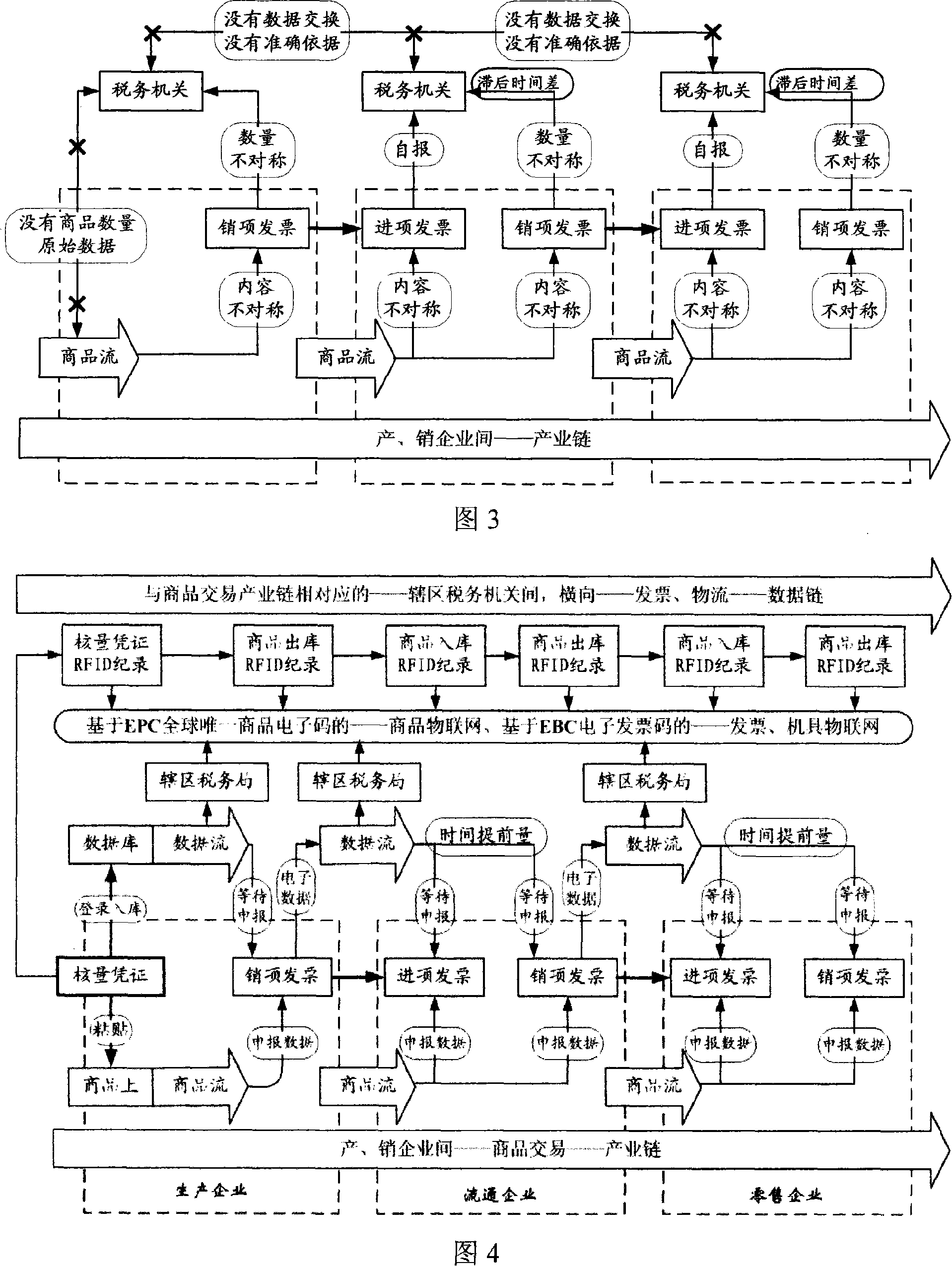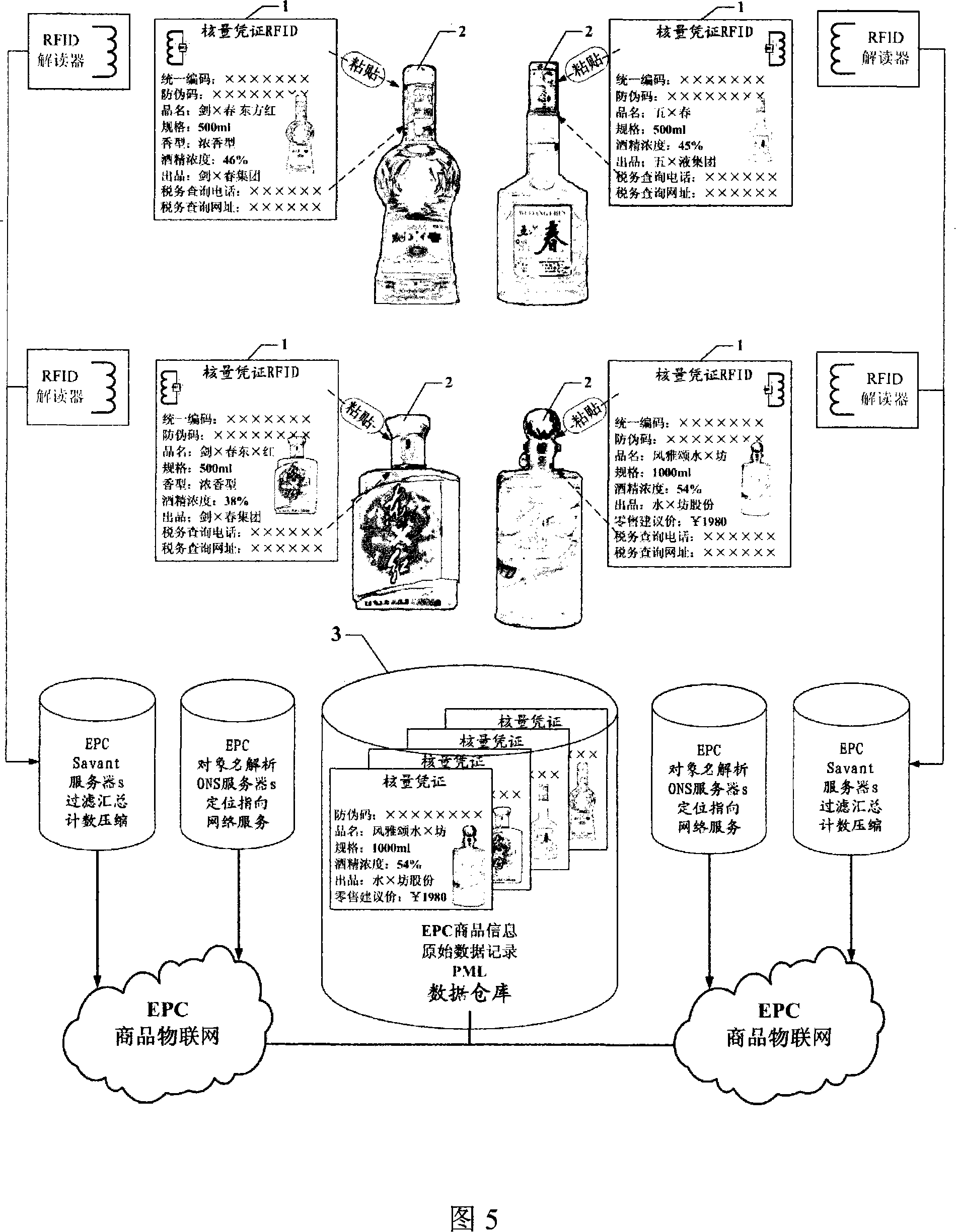[0019] The current tax management methods and export tax rebate methods cannot completely prevent the occurrence of export tax fraud cases, cannot balance the invisible financial reverse transfer
payment burden brought by export tax rebate policies in developed and backward areas, and cannot balance the local financial burden of tax rebates for export commodities in different places. Realize the tax rebate principle of "how much is collected and how much is refunded", let alone prevent and eradicate smuggling of imported goods
[0020] In order to balance the transfer
payment of export tax rebates, encourage the development of imported
materials processing industry, and prevent repeated tax refunds, the tax authorities need to know where each import and export goods is purchased, or where the raw materials of export commodities are purchased, so that Formulate and implement a reasonable tax rebate burden mechanism, support backward areas to develop export commodities, foster emerging industries and welfare industries, encourage export trade-concentrated areas to actively develop export trade, encourage the development of independent procurement and
processing trade, and protect the interests of legitimate importers. The agency does not have effective
logistics management records and cannot achieve "
big data tracking", so it cannot reasonably achieve the above policy goals
[0021] 2. The construction of the current tax
control system does not meet the requirements of precise tax control and management
[0022] At present, the "data centralization" implemented in the
third phase of the Golden Tax Project is mainly a large-scale centralized
processing of taxation
business data. Specifically, it is to run integrated management
software at the provincial level to realize the centralized
processing of major taxation
business data, from unified taxation data, This is necessary to achieve
macro-
management efficiency, but the current data concentration does not include the value-added tax invoice cross-audit
system, anti-counterfeiting tax
control system, and export tax rebate review
system. In terms of management effect, the current large data concentration is "helpless and useless". Even if the value-added tax invoice cross-audit system, anti-counterfeiting tax
control system, and export tax rebate review system are centralized in the provincial platform for unified processing in the future, it is difficult to predict The overall improvement of management effect, not to mention that centralized processing is difficult to improve the efficiency of real-
time processing of commodity dynamic circulation data. It is unrealistic for the State Administration of Taxation to centralize all the
dynamic data of the national taxation business in the State Administration of Taxation for real-
time processing. At least for the control and control of the authenticity of the invoice content and the completeness of invoice issuance, it is a huge investment. Time-consuming and inefficient way
[0023] In the era of network economy, e-commerce presents a paperless feature. The development of e-commerce poses a challenge to the traditional tax system. The current tax system uses accounting
information system accounting, account book records, vouchers, etc. as the basis for collection and inspection. The way of collection and management, this kind of collection and management is out of touch with the actual process of e-commerce, and the application of
electronic money has also opened up new ways for the evasion of monetary funds. Various transaction activities of online companies may occur at any time, end at any time, or Its
business activities present a kind of immediacy or randomness, and it is impossible to implement tax control "big data tracking", which makes the traditional tax
registration system helpless in implementing effective monitoring and management of online entities
As a result, it is difficult to control the problem of tax evasion in online transactions, and the "tax failure" caused by online trade has shaken the tax bases of various countries
[0024] 3. It is impossible to establish a tax control system that meets the requirements of precise tax control and management with the current construction method
[0029] 3) In theory, the Golden Tax Project should put forward the unified operation and processing requirements of the national tax control system data, but so far it is still facing complex data sources. Due to the heterogeneity, non-
standardization, isolation and Incompleteness, the operation of data is very complex and difficult
[0030] 4) Theoretically, the Golden Tax Project should put forward the requirement of highly controlling the data of the national tax control system, but so far it is still difficult to control the data operation, which is reflected in the difficulty in obtaining real-time and
complete data information, data construction and maintenance. The high cost of use and use makes it difficult to achieve unified
security management of data
[0031] 5) At the business level, there is no unified management, the tax control
business requirements are global, the current status of tax control management is scattered and isolated, information cannot be shared, and business cannot be coordinated; taxpayers report tax information once a month, and cannot grasp the goods The real-
time information of the transaction cannot carry out real-time tax control on the commodity transactions that occur and end in real time; the data cannot be guaranteed to be smooth and safe in the process of "big data tracking"; the authority cannot be controlled, adjusted and reflect
[0032] 6) In terms of
business development, the application
bottleneck restricts the expansion of new services, and the performance
bottleneck restricts the improvement of business volume. It cannot adapt to new business and functional requirements, cannot realize effective communication with surrounding systems, and cannot adapt to the increasingly rich new The complex development of
business logic interaction makes it impossible to respond quickly to the continuous development of business
[0033] 7) At the application level of innovative business, it is even more impossible to realize the "big data tracking" required by the present invention, because the national taxation system is not established on a unified, service-oriented "loosely coupled" platform. In the case of separation, the
business requirements of the present invention cannot be realized
[0034] 8) In short, the current national tax control system is not established on a unified platform, unified network, and unified standards. It does not consider the needs of unified organization, operation, and management of national tax
control data. It is only resolved in various places. The local "OA" and "computerization" needs to be built in isolation. It seems that the investment of the General Administration was reduced at that time, but in the end a unified national tax
control network was not formed, which increased the difficulty of meeting new
business requirements. "From scratch"
 Login to View More
Login to View More  Login to View More
Login to View More 


